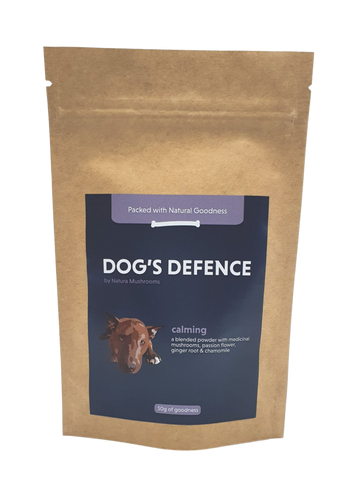
Signs Of Separation Anxiety In Dogs

Are you and your doggo like two peas in a pod?
You know, the next Batman and Robin. SpongeBob and Patrick. Woody and Buzz Lightyear. You get the idea? You’re the two bestest friends!
But as special as this relationship is, sometimes a bond this close can cause separation anxiety when you’re not around. Cue: the violins.
It’s a heartbreaking feeling when your dog is anxious and frightened, but with time and persistence, they can overcome their fear of being alone (and love you just as much when you return).
This article will dive into:
- What causes separation anxiety in dogs?
- The signs of separation anxiety in dogs
- How to help a dog with separation anxiety
So, pull up a chair, place Archie on your lap and let’s dive in.

What causes separation anxiety in dogs?
Just like humans, some dogs may be more susceptible to anxiety than others, regardless of their situation.
There’s no definitive conclusion about why it develops, but here are a few theories…
- Some breeds may be more prone to separation anxiety
- Dogs that are “hyper attached” to their owner may develop separation anxiety
- Separation anxiety may be triggered by being left alone for the very first time
- Separation anxiety may occur after a life-changing event, like moving house or the loss of a fellow companion
What are the signs of separation anxiety in dogs?
From howling to destructive chewing to pooping on your best cushions, the signs of separation anxiety vary from dog to dog.
Here are 4 of the most common signs…
1. Numbers ones and twos
Leaving number ones and twos throughout the house could be a sign of separation anxiety – particularly if your pooch is otherwise toilet trained (and never has accidents when you’re around).
You didn’t care about that rug anyway, right?
2. Making noise
Relentlessly barking, howling or whimpering as soon as you leave is a clear sign of separation anxiety (which your neighbours will no doubt let you know about).
3. Wreaking havoc
Also known as, “They’re gone. Now let’s ruin EVERTHING.”
But let’s be clear, your dog isn’t doing this to annoy you – they just miss you terribly. Whether it’s your favourite cushion, scratching at the window or your go-to pair of jeans – separation anxiety can lead to destructive (and expensive) behaviours.
4. Digging
Does your backyard have craters bigger than the moon? In some cases, your dog might really like digging. But in other cases (particularly if it always happens when you’re not around) it might be a separation anxiety thing.
5. Loss of appetite
If your gobble-guts is leaving food when you’re not around, it might be more severe than simply not-liking-that-new-meaty-flavour. Just like humans, anxiety can act as an appetite suppressant for dogs.
Now let’s be clear. Just because your dog is displaying these signs doesn’t necessarily mean they’re experiencing separation anxiety. They might leave poop because they’re not toilet trained. Or make noise because they don’t like the look of that fly.
Moral of the story? Always chat with a veterinary professional or behavioural specialist before making any conclusions.

How to help a dog with separation anxiety
So, you’ve confirmed that your dog has separation anxiety.
At Dog’s Defence, we’ve had our own experience with a nervous nelly, and these are some of the things we tried. And since the early days, she came leaps and bounds.
Tire them out
Take them to the beach, scale a mountain, run a marathon – do what you have to do to tire them out before you leave. This can leave them feeling calm and relaxed, so you can slip out the back door as they enter the land of nod.
Be cool, calm and collected
Don’t make a fuss when you’re leaving (as your dog will sniff something’s up from a mile away). Instead, play it cool. Don’t smother them with love when coming and going - as hard as that is.
Start small
Try leaving the house in small intervals first so your doggo gets used to you coming and going. Duck out for 5 minutes, then 20, then 1 hour. And so on. Remember to give them a treat when you return if they were a good boy or girl.
Give your dog a treat to distract them
The key here is longevity. Avoid giving them a treat that they’ll gulp down in 0.02 seconds. Give them something that takes up time – like a chewy treat or bone. There are also a range of “puzzle toys” on the market where you can hide delicious treats, like peanut butter.

Play soothing music
Studies suggest that playing music can reduce stress and anxiety in dogs.(4) But before you switch on your heavy metal tunes, know that the type of music matters. Research suggests classical music has calming effects. Better yet, there are plenty of dog calming playlists available on Spotify.
Consider natural calming supplements
If music, treats and running a marathon doesn’t work – you can try giving your dog natural calming supplements. Ingredients like ginger, camomile and hemp work to calm your doggo from the inside out.
Finally, if you’ve tried multiple at-home solutions and your doggo is still anxious, frightened or at risk of hurting themselves, it may be necessary to chat to a veterinary professional. They’ll have a range of clinical options to keep your best friend safe, happy and full of tail wags.

At Dog’s Defence, we’re a team of proud paw parents and mushroom farmers. We combined our two passions and created a range of nutritious dog supplements that turn tail wags into full body wiggles. Our anxiety and calming blend for dogs is made using a range of medicinal mushrooms, as well as ginger root and chamomile, helping stressed doggo’s find their inner zen.
Resources and further reading:
